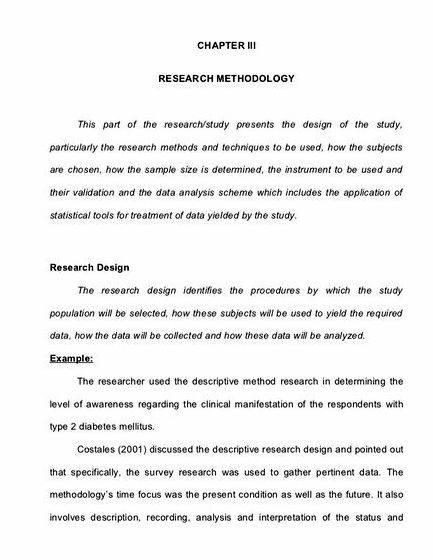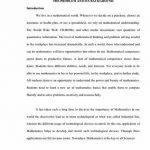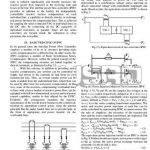Writing a Credible Thesis Methodology Section
If you got acquainted with what thesis format includes, you must have made an assumption that such part of your paper as the thesis methods will require special attention. It is true, as good explanation and description of the methodology used is what makes the whole study credible in the eyes of the reader. Effectively developed methodology chapter will make your paper much stronger, and support the study results. On the contrary, the whole paper will be ruined by only the badly written methods section, no matter how good the study is itself.
As you understand, to get the maximum of chances for success, it’s necessary to polish the thesis methods section until it is 100% perfect. For this purpose, use the guidelines provided here by MasterPapers.com professional writers. These pieces of advice are constantly used by our writing team when preparing theses for our customers. As the result is always the success of the paper, you can confidently rely on our help and use the following tips when writing the methodology chapter of your thesis.
What the Methodology Chapter Includes
Here is the list of what information should necessarily be included in the methodology section of your paper.
Thesis methods:
• Make the results of the research seem believable for the reader
• Enable other researchers replicate your study to check the results
• Describe the theoretical background of the study, procedures and materials used when conducting the experiment
• Provide the calculations, explain techniques, and describe the equipment used
• Include the limitations and assumptions explanations, as well as provide the validity range
• Refer to the special software used in experiment procedures or for calculations in case it was applied.
Four Steps to Effectively Describe Thesis Methods
1. Determine the problem you are researching/ the question you’re trying to answer/ the subject you’re studying. Do not go deep into details; make a short but sustainable overview. This would give the reader an opportunity to find the logical connection between what you’re studying and how you’re studying it.
2. Explain the methods chosen for the study or the experiment. The explanation should be lucid and explicit enough, so that it was easy to catch the essence of the method and its usage.
3. Verbally lead the reader through all the steps of the study process. The details concerning the techniques, equipment, process, etc. are vital here. The reader should be able to draw a clear picture of how you carried out your study. Equally, another researcher should be able to use these explanations for conducting the same study.
4. Prove that the methods were perfectly chosen for your specific study, and no other would suit better. A simply good approach is not enough. Show that your approach is also the most relevant one.
With a good understanding and thorough usage of all the guidelines described above, your thesis methods chapter will become a strong component of the paper, not a weak one. Still, in case you have some doubts about your ability to produce a well-written methodology section, use the help of our experienced qualified writers who can write a good-as-gold methods section in your custom thesis.

“WOW! The paper looks so great! Can’t believe this is a 24 hours work! I’ll definitely recommend you to my friends for writing service.”
2014-04-27, J.M. USA
“A very good service. Having finished the paper, the writer answered all my questions. Thanks for your hard work and effort. I will definitely recommend masterpapers.com to others.”
2013-07-30, K.H. USA
“Again, another great project you’ve assisted me. The essay was exactly what I was looking for, and it was done professionally and timely. Thanks again and hope to use your service again in the future.”
2013-06-21, T.A. USA
“Thank you very much for helping me with this paper. I’ve submitted it for a revision and will get back to you should there be any changes.”
2012-09-29, R.F. USA
“In general the research paper was a success. I really appreciate your assistance. The paper was well-organized and well-thought. I will definitely use masterpapers.com in the near future and also recommend your services to others.”
2009-11-29, R.B. USA
Features
- Free Revision
- Free Title & References Pages
- Bonuses for Every Order
- Direct Messages to Writer
- 24/7 Support
Order Now ›
The Methods Section
This is the “how” section of your research report. Precision and exact details are key to this section, but do not include irrelevant material. This concrete infomation is usually presented in simple past tense, either active voice (We collected water samples every three days) or passive voice (Samples were collected every three days). The ultimate test of a well-written Methods section is in replicability — could someone else reproduce the study given what you wrote?
Include enough information about materials and methods to enable another suitably qualified person to repeat your experiments. Relegate tedious but necessary details to an Appendix, so that there are no breaks in the flow of ideas in your presentation. from “How to Write a Thesis”
The methods section generally includes three types of information:
- subjects / participants / substances;
- apparatus / materials / instruments; and
- procedure.
Most commonly, some mention of “participants/subjects/substance” (whatever passes for that which was experimented upon) is discussed first, though this is not always the case. For example, if you performed the same procedure on three different groups, you may choose to explain the procedure in detail first, then lay out the composition of the groups. Or, if you have three different procedures on the same type of group, you’d more logically start with the “group” and proceed to procedure. Also, if your work involves multiple tests, then the Methods may be organized topically according to test with parallel organization shared among all.
As always, if you have a complicated Methods that you are not sure how to lay out, look for a research article that deals with a similar issue and model your organization after theirs!
Also, check with your PI/mentor/supervisor/ lab leader regarding using the traditional citation system as a means of writing your Methods section. For many, the method was actually performed by other researchers (or your PI!), and you are applying that Method to a different set of subjects. In this case, you may get to use the publishable shortcut and cite the part of the procedure with “. was performed as in X, Y, Z (2004).” On the other hand, your PI may want you to experience the full glory of writing every step out in excruciating detail.
Keep in mind that whatever is in Methods should find a corresponding mention in Results. You may want to organize the Methods section so that you can use the parallel organization (or pretty similar) in the Results section.
Example (from Rothschild, G. Nelken, I. Mizrahi, A. (2010). Functional organization and population dynamics in the mouse primary auditory cortex. Nature Neuroscience. 13, 353-360, DOI:10.1038/nn.2484 ):
We used male and female NMRI mice * (total of n = 28 mice, 812-weeks-old), anesthetized using ketamine (100 mg per kg of body weight) and medetomidine (0.83 mg per kg). Depth of anesthesia was assessed by monitoring the pinch withdrawal reflex. Dextrose-saline was injected subcutaneously to prevent dehydration. Body temperature was maintained at 3638 �C. The skull was exposed, cleaned and dried. A metal pin was glued to the skull and attached to a custom-made head holder allowing precise orientation of the head relative to the objective. The muscle overlying the left auditory cortex was removed and a craniotomy (
3 � 3 mm) was performed. The dura was gently removed and the cortical surface was kept continuously moist. Following each experiment, animals were killed by overdose with sodium pentobarbital. All experiments were approved by the Hebrew University Animal Care and Use Committee.
Dye loading and two-photon imaging.
The auditory cortex was loaded with Fluo-4 a.m. (F14201, Invitrogen) using multicell bolus loading 14. Fluo-4 a.m. was dissolved in 20% Pluronic F-127 in DMSO (vol/vol, P-6867, Invitrogen) to a concentration of 10 mM and further diluted tenfold in external buffer containing 125 mM NaCl, 5 mM KCl, 10 mM glucose, 10 mM HEPES, 2 mM CaCl2. 2 mM MgSO4 and 0.1 mM sulforhodamine 101
* NPG claims that ” Nature journals like authors to write in the active voice (‘we performed the experiment. ‘) as experience has shown that readers find concepts and results to be conveyed more clearly if written directly .” (nature.com/authors/author_resources/how_write.html ) — and yet you will see that the rest of this Nature publication is written in the passive voice. This is not an evil writing choice! Passive voice is used when the object of an action is the topic of the discourse; that is, when what is being done (or done unto) is what the paragraph is about. So, after making it clear that human scientists were the ones performing the activities by using the active voice to get the section started, the rest of the paragraph can focus on what was done. Try turning every sentence into the active voice and see how very strange it sounds! The constant “we. we. we. ” becomes mighty intrusive.





 Writing a thesis introduction chapter
Writing a thesis introduction chapter Interline power flow controller thesis writing
Interline power flow controller thesis writing Hardware and software specification thesis proposal
Hardware and software specification thesis proposal Sports complex architectural thesis proposals
Sports complex architectural thesis proposals Medical physics phd thesis proposal
Medical physics phd thesis proposal






